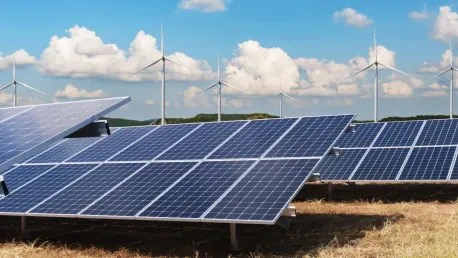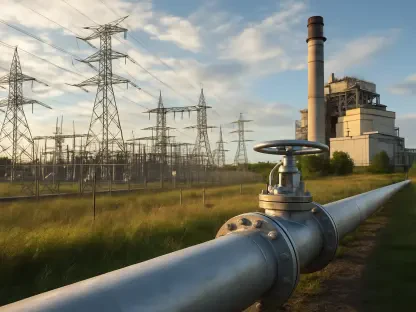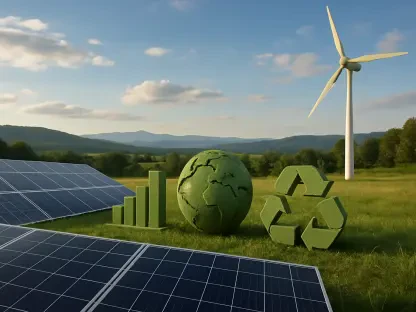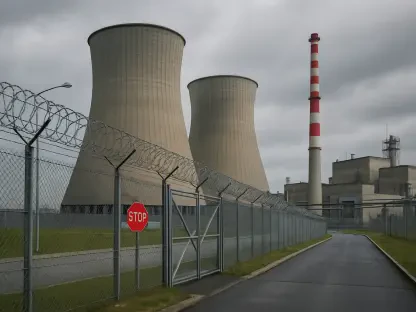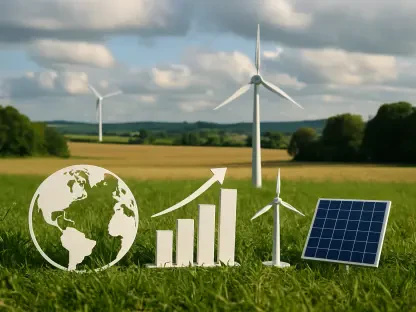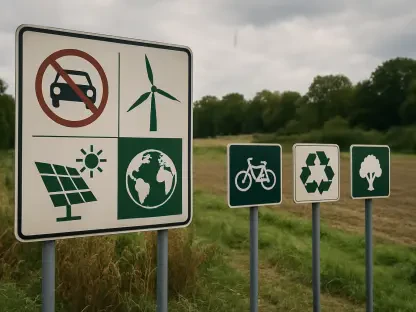Singapore has unveiled a comprehensive strategy to meet its climate targets by 2030, focusing on energy efficiency, carbon capture technology, and clean energy imports. This detailed plan, submitted to the United Nations in November 2024, provides a transparent roadmap within the framework of the Singapore Green Plan 2030. The report outlines the nation’s greenhouse gas inventory and progress towards climate goals, marking a significant step in Singapore’s commitment to reducing emissions. The strategy reflects a long-term vision aimed at sustainability and tackling the pressing issue of climate change by integrating innovative technologies and international cooperation.
Current Emissions and Principal Contributing Sectors
In 2022, Singapore’s greenhouse gas emissions were approximately 58,590 kilotonnes, primarily from the power, industrial, and transportation sectors. The power sector, driven by the country’s reliance on natural gas for electricity generation, stands as the largest single contributor to emissions. This contextual overview sets the stage for understanding the scale and sources of emissions that Singapore aims to reduce. As the nation anticipates its emissions will peak in 2028 before declining to about 60,000 kilotonnes by 2030, a series of planned mitigation measures are being strategically placed to address the issue.
Industrial activities are also a significant source, with manufacturing and refining operations contributing heavily to the nation’s carbon footprint. Transportation, with its heavy dependence on fossil fuels for vehicles and public transport, further adds to the emissions tally. Together, these sectors form the backbone of Singapore’s economic activities, making it imperative to focus climate initiatives here. The detailed report stresses the importance of understanding these contributing sectors comprehensively to develop targeted solutions aimed at mitigating overall greenhouse gas emissions effectively.
Energy Efficiency Improvements
Energy efficiency improvements, especially in industries, are projected to contribute up to 30% of the total emissions reductions, amounting to between 2,240 and 3,360 kilotonnes of CO2 equivalent (kt CO2 eq). These initiatives include increased usage of energy-saving machines and the imposition of minimum energy efficiency standards on industrial facilities, such as chilled water coolers. Compliance with these standards demands a significant overhaul of existing processes and equipment, pushing industries toward more sustainable practices. This can never be overstated, considering the large emission volumes from industrial activities.
To further support this transition, the government of Singapore is actively promoting the adoption of energy-efficient technologies and practices across various sectors. Incentives and regulatory measures are being implemented to encourage businesses to invest in energy-saving equipment and processes. By integrating these machines and practices, industries not only contribute toward emission reductions but also see enhanced competitiveness through lowered operational costs. This dual benefit emphasizes the pragmatic approach of the Singaporean government, reflecting a clear understanding that economic interests and environmental sustainability can converge for mutual gains.
Carbon Capture, Utilization, and Storage (CCUS) Technology
Carbon capture, utilization, and storage (CCUS) technology is expected to remove up to 2,500 kt CO2 eq by 2030, accounting for roughly 20% of the total anticipated emissions reductions. This technology captures carbon dioxide emissions from industrial processes and either reuses it or stores it underground, preventing it from entering the atmosphere. Such technology is pivotal for a dense, industrialized urban environment like Singapore, where emission volumes are substantial. The integration of CCUS into their climate plan showcases an ambitious yet potentially transformative step forward.
Given Singapore’s lack of suitable underground sites for carbon storage, the government is evaluating the feasibility of cross-border carbon capture projects with neighboring nations such as Indonesia, Malaysia, and Japan. These collaborative efforts are essential for overcoming the spatial constraints and high costs associated with CCUS technology deployment. Cross-border carbon capture projects demonstrate how international cooperation can be leveraged to address common environmental challenges, thus setting a valuable precedent for global climate action initiatives. Through these partnerships, Singapore aims to navigate the logistical limitations while making substantial strides in emission reduction.
Clean Energy Imports
The importation of renewable electricity is projected to offset around 20% of emissions reductions, estimated to eliminate 2,340 kt CO2 eq by 2030. Singapore has strategically inked deals with Indonesia, Cambodia, and Vietnam aimed at importing 5.6 gigawatts of low-carbon electricity by 2035, with operations expected to begin from 2028. This forward-looking approach is critical for an island nation like Singapore, which faces spatial constraints for deploying large-scale renewable energy projects domestically. By leveraging regional partnerships, Singapore’s strategy also includes diversifying its energy sources to more sustainable options.
These regional collaborations help Singapore access a more diverse and sustainable energy mix, significantly reducing the nation’s reliance on fossil fuels. This proactive stance highlights the importance of enhancing energy security while simultaneously addressing climate change. By forging strong connections and ensuring the technological readiness of cross-border energy infrastructure, Singapore can substantively advance its renewable energy agenda. This approach not only positions the country favorably in the climate action landscape but also underscores the critical interplay between technology, policy, and international cooperation in achieving climate goals.
Challenges and Limitations
While the detailed measures and target estimates provided in the report represent a significant step towards transparency, there is an inherent acknowledgment of the challenges and potential limitations of the 2030 goals. For instance, the industrial energy efficiency initiatives, despite their high abatement potential, still represent less than 10% of the sector’s emissions in 2022. This underscores the tension between the aspirational targets and the practical challenges faced, particularly for a small, resource-constrained nation. Such limitations point to the need for ongoing adaptation and adjustment of strategies to ensure practical implementation.
The economic challenges posed by the high cost of technology deployment, especially for carbon capture and storage, are significant. Additionally, the success of renewable electricity importation hinges on robust bilateral agreements and the technological maturity of cross-border energy infrastructure. These factors highlight the complexity of achieving the ambitious climate targets set by Singapore. Transparent acknowledgment of these challenges facilitates ongoing dialogue and encourages proactive measures to address potential roadblocks effectively.
International Cooperation and Future Ambitions
Singapore has introduced an ambitious plan to achieve its climate targets by 2030, emphasizing energy efficiency, carbon capture technology, and clean energy imports. This comprehensive strategy was presented to the United Nations in November 2024, showcasing a clear and transparent roadmap under the Singapore Green Plan 2030 framework. By detailing the nation’s greenhouse gas inventory and tracking progress towards climate goals, the report signifies a major milestone in Singapore’s pledge to reduce emissions. The plan underscores a long-term vision dedicated to sustainability and combating the urgent issue of climate change. It integrates cutting-edge technologies and emphasizes international collaboration to drive meaningful action. By focusing on innovative solutions and cooperating with global partners, Singapore aims to set a strong example in the fight against climate change. This strategy highlights the nation’s commitment to environmental stewardship and its proactive approach to creating a sustainable future.
